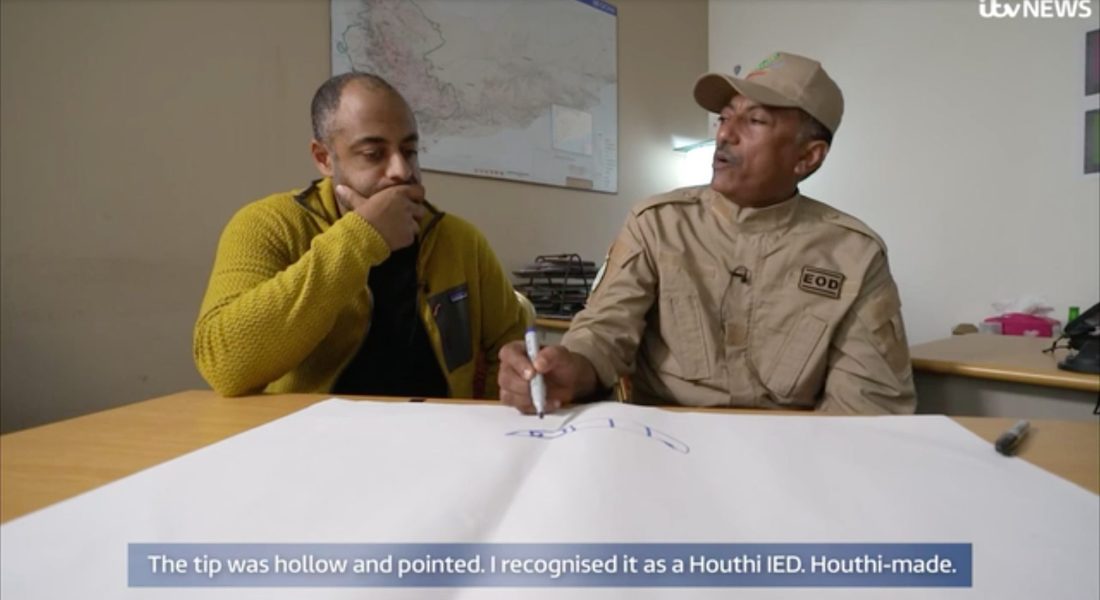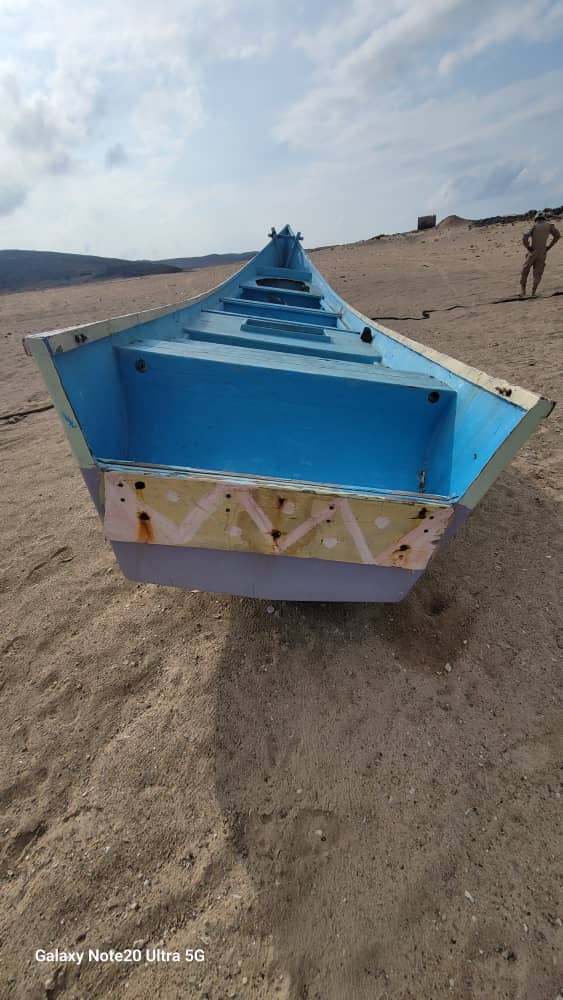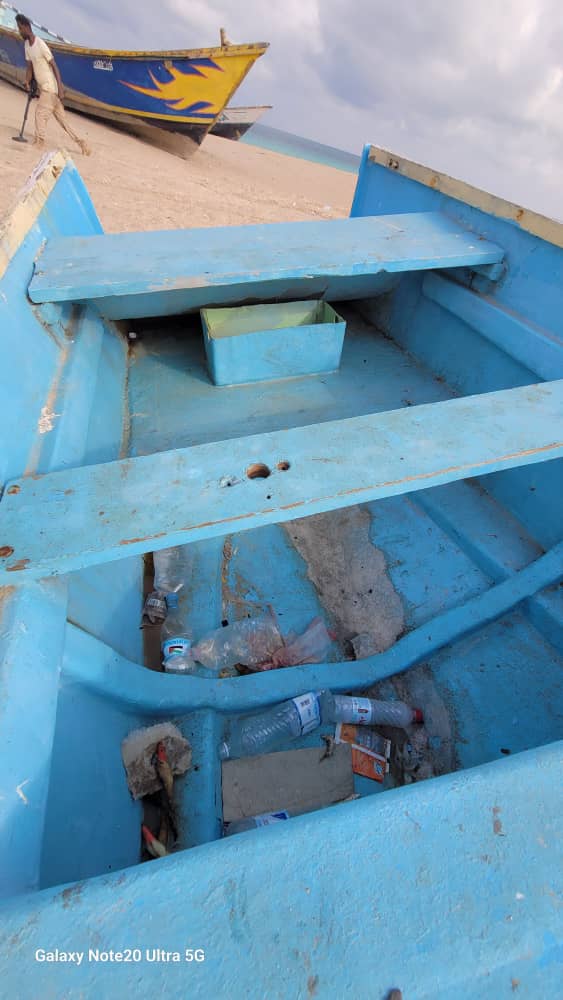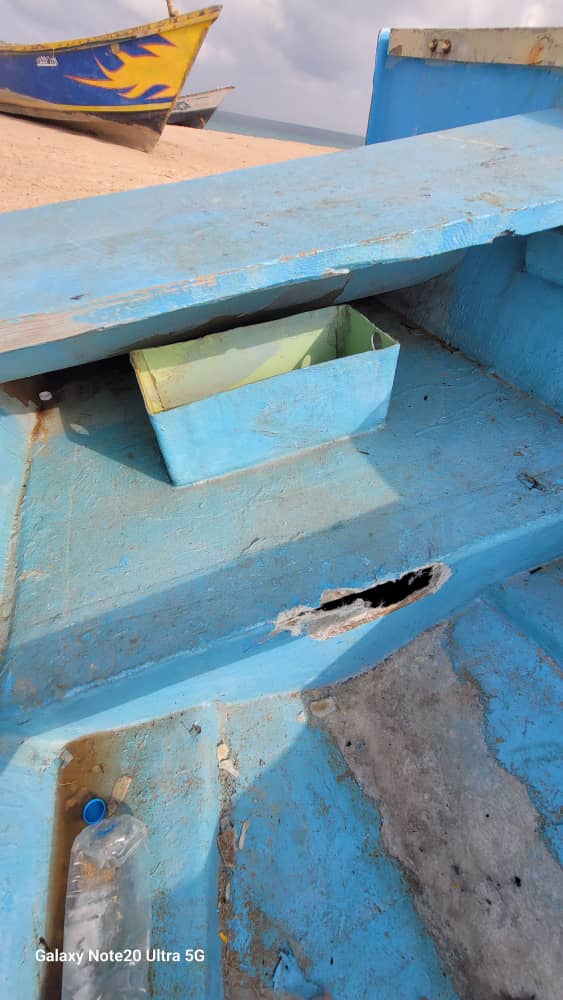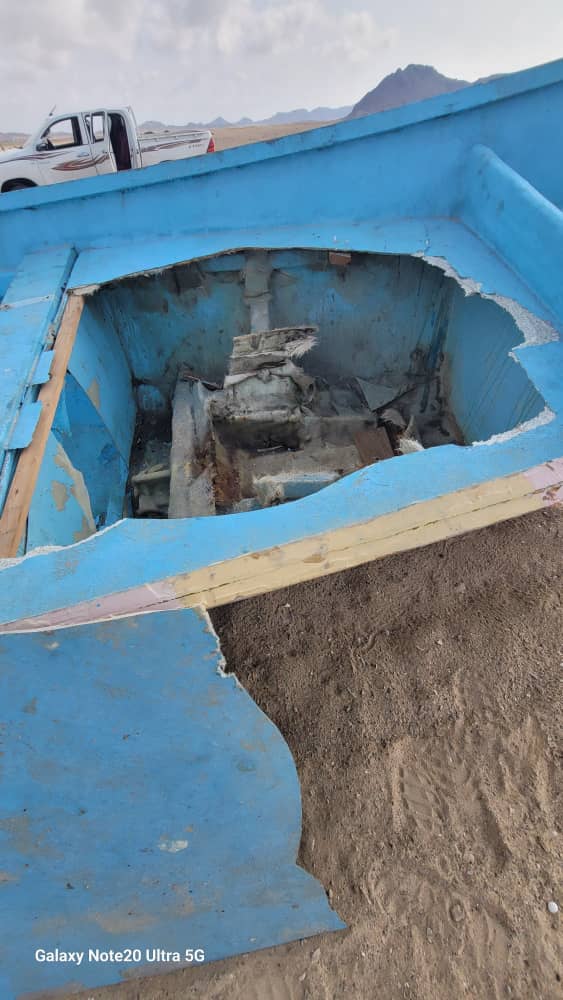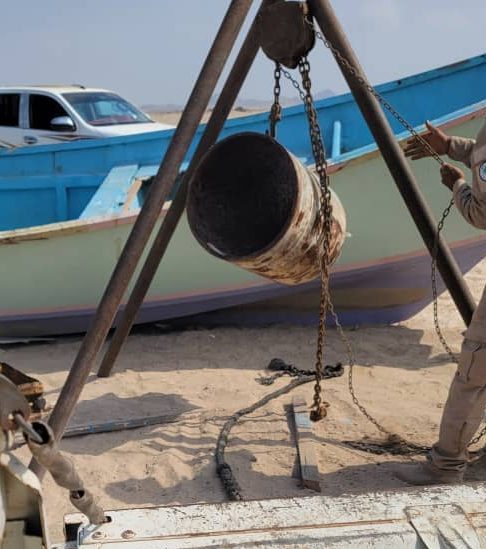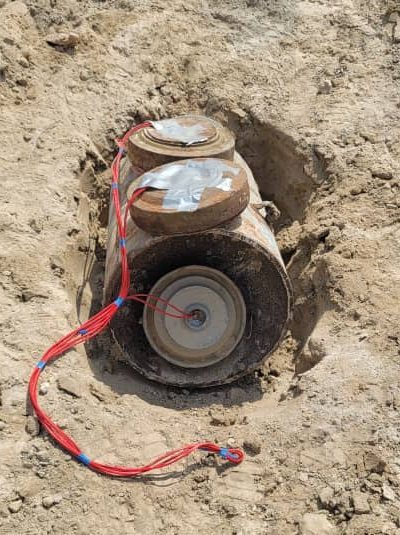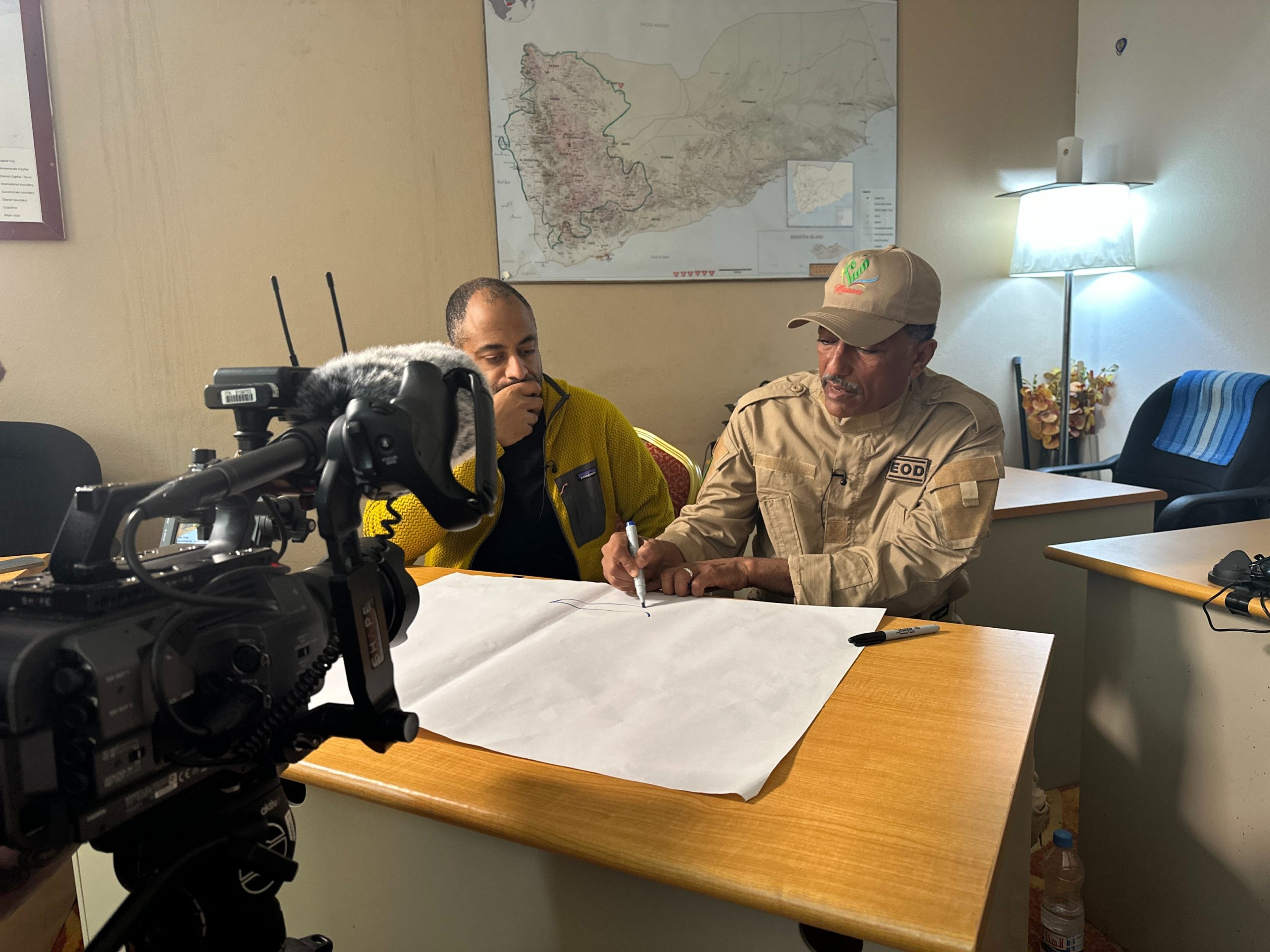This week, Project Masam provided first-hand accounts from demining experts as well as investigative materials to a British TV news channel after our teams discovered, and destroyed, Yemen’s largest ever waterborne bomb, which could have been used by the Houthis to target international shipping in one of the world’s key commercial routes.
Since at least 2017, Houthi militias have used sea, or naval, mines (conventional and improvised) and conducted targeted attacks using “suicide”-drone boats laden with explosives against shipping vessels along the strategic Red Sea and critical Bab al Mandab Straight, through which some 24,000 vessels sail through transporting 10% of the global seaborne trade by volume, according to the Economist.
The ITV News crew were particularly interested in the contents of the explosive charge and an additional 500 litres of petrol, which were discovered in a basic, blue wooden boat – resembling many other civilian fishing boats sailing the Red Sea coast every day.
The boat was found unmanned and floating near the coastal Bab al Mandab village, where fishermen dragged it back to shore. It was left untouched for a month among other fishermen boats.
With no one claiming the boat, local villagers decided to inspect the vessel and spotted wires coming from the a hole in the hull of the boat before they reported the suspicious boat to Project Masam on 18 January.
After Fekri Hasan Qasim Naji, leader of Project Masam’s demining Team 28, responded to the emergency report and was first on location. When he followed the wires, he discovered a huge explosive charge (our investigation found 25kg of C4 explosives and at least 50kg of TNT) hidden in a large container. Project Masam’s EOD team was called to safely remove the improvised explosive device (IED)’s explosive charge from the boat and transport it to be demolished on 22 January.
Our IED expert said that, while the Houthis have been using the same type of bombs on “suicide boats” for years, this was the first time Project Masam had seen and dealt with such a large waterborne IED. Our IED expert presumed these huge charges could be used in order to target large vessels (such as warships or commercial ships) in Yemeni territorial waters.
Given the “pure shaped” explosive charge and container, its size as well as the petrol containers discovered on board the boat, Project Masam found that this Explosively Formed Penetrator (EFP, a form of IED) could have had the capacity to puncture the hull of a large ship of substantial thickness and continue to cause damage on the inside of the ship after contact.
Indeed, depending on the stand-off distance to the device when it explodes, the blast could easily open up the side of a vessel’s hull and set fire to the vessel if the penetrator or heat from the explosion made contact with anything combustible, such as the petrol jerricans discovered on the fishing boat.
Both Fekri Hasan Qasim Naji and Adib Rajad Ahmed Ali, one of Project Masam’s EOD Experts, spoke to ITV News about the EFP discovered in the hull of the boat.
Further, according to our investigation, the EFP showed every sign it was Houthi-manufactured due to the chemical precursors used to create the explosive charge, and the boat may have been designed to be directed towards a target by remote control or GPS system – a documented Houthi modus operandi.
With many INGOs working in Mine Action leaving Yemen or cutting funding, Project Masam (which is Saudi-funded and the largest humanitarian landmine clearance project in Yemen) has committed to continue its mission to make Yemen safe again, which includes dealing with these extra-large lethal improvised weapons as well as sharing its findings to educate and inform.
Watch the news segment here: https://lnkd.in/e5JCkQQi

